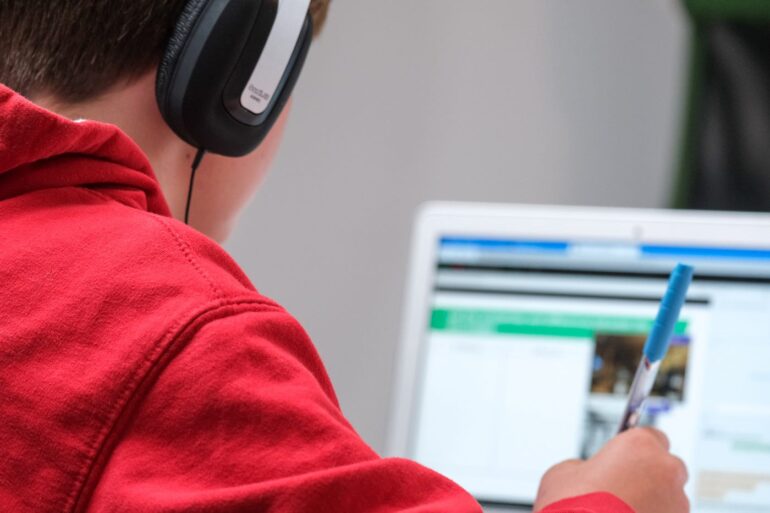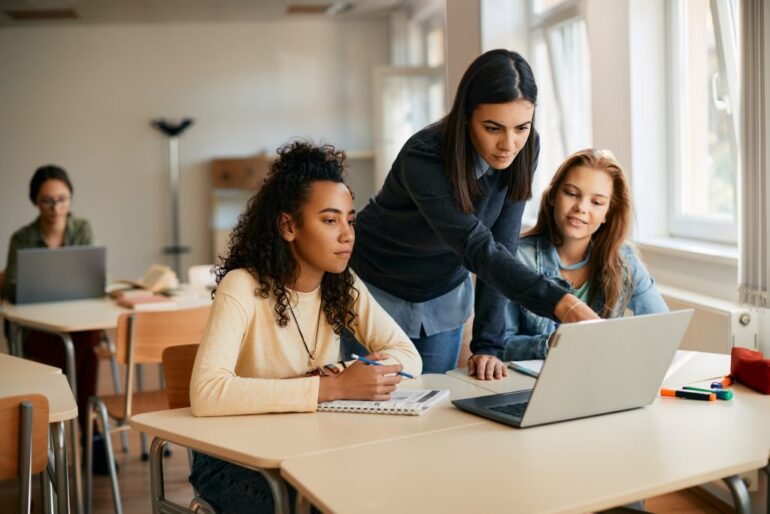Technology integration into education has brought about a significant shift in how students and teachers communicate and collaborate. With the widespread use of online tools, there is a greater focus on providing targeted and meaningful feedback, fostering student autonomy, and supporting student collaboration. These efforts are crucial in improving student learning outcomes and creating a more engaging and supportive learning environment.
The use of technology to improve feedback and foster collaboration can have a profound impact on the education system. Online feedback tools like Lumin allow teachers to provide students with more detailed and specific feedback.
This type of feedback can help students better understand their strengths and weaknesses and identify areas that need improvement. Additionally, online tools can encourage meaningful feedback by tracking annotations over time and keeping a record of a student’s progress and growth.

Furthermore, online tools can play a significant role in supporting student collaboration. Using a PDF editor like Lumin to merge, combine, and split PDF files, students can work together on group projects and integrate different parts of a project into a comprehensive document.
Virtual meetings through video conferencing platforms can also be scheduled, where students can discuss their projects and provide feedback to each other in real-time.
In this article, we will explore the role of technology in improving feedback and fostering collaboration in the education system. We will discuss how online feedback tools support student autonomy, encourage meaningful feedback, and support student collaboration.
By highlighting the benefits of technology in education, we aim to demonstrate how it can enhance the learning experience for students and help improve student learning outcomes.
Online Feedback Tools Support Student Autonomy

Student autonomy is a critical aspect of the learning process, and online feedback tools provide students with the means to receive immediate and specific feedback on their work. Using these tools, teachers can provide more detailed feedback, helping students better understand their strengths and weaknesses and identify areas that need improvement.
For instance, teachers can use tools such as Lumin to annotate student work and provide written comments. Lumin also allows teachers to merge, combine, and split PDF files, which makes it easier for students to review and reference their feedback. Furthermore, virtual meetings through video conferencing platforms can be scheduled where teachers can provide real-time feedback and discuss student work.
Aside from teacher feedback, online tools also enable students to receive feedback from their peers. By using video conferencing platforms, students can hold virtual meetings where they can discuss and provide feedback on each other’s work. This type of collaboration can help students learn from one another and increase their confidence in their abilities.
Online Tools Encourage Meaningful Feedback

Online feedback tools are designed to enhance students’ feedback quality. These tools provide more targeted and specific feedback, which can help students receive more meaningful feedback.
For instance, Lumin can be used to highlight specific areas of a student’s work that need improvement. By tracking annotations over time, teachers can identify areas where students may need additional support and provide consistent and meaningful feedback.
Moreover, online tools can be used to keep a record of a student’s progress and growth. By using a PDF editor like Lumin to annotate student work and saving and tracking these annotations over time, students can see their progress and identify areas that need improvement.
Online Tools Can Support Student Collaboration

Online tools can also play a significant role in supporting student collaboration. For example, students can use Lumin to work on group projects and integrate different parts of a project into one comprehensive document by merging and combining PDF files.
PDF editors can also be utilized for editing and annotating documents together, allowing students to work on the same document simultaneously and receive feedback and suggestions from each other. Splitting PDF files into individual files enables students to quickly review and reference each other’s work.
In addition, virtual meetings through video conferencing platforms can be scheduled, where students can discuss their projects and provide feedback to each other in real-time. This type of collaboration enhances the learning experience for students as it allows them to learn from one another and increases their confidence in their abilities.
In conclusion, the integration of technology in education has the potential to improve feedback and foster collaboration significantly. Online feedback tools like Lumin offer a convenient and efficient way for teachers to provide detailed and specific feedback to students, which can help improve student learning outcomes. Additionally, these tools allow for meaningful feedback to be tracked over time, providing a comprehensive record of a student’s progress and growth.
The use of technology also plays a crucial role in fostering student collaboration. Technology creates a supportive and engaging learning environment by allowing students to work together on group projects, integrate different parts of a project into a comprehensive document, and hold virtual meetings. This type of collaboration is critical in developing essential life skills, such as teamwork, problem-solving, and communication.
Moreover, technology allows students to take ownership of their learning and become more self-directed. By providing access to online feedback tools and virtual collaboration spaces, students are given the space to explore their interests, develop their skills, and grow as individuals.
In light of these benefits, it is clear that technology has the potential to transform the education system. Using technology to improve feedback and foster collaboration can create a more engaging and supportive learning environment that helps students reach their full potential.

